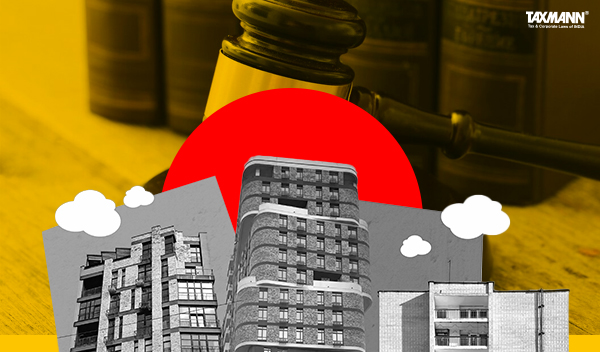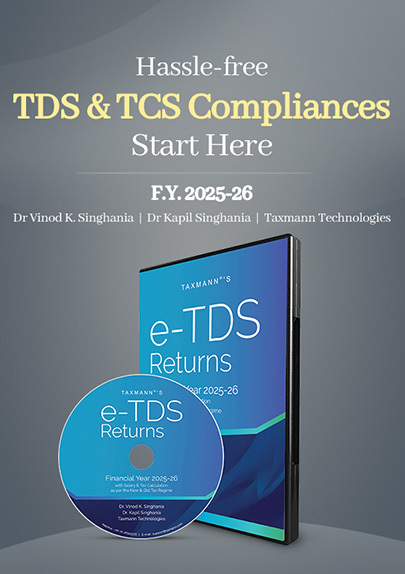[Opinion] Dwelling on the Disputes – ‘Residential Houses’ and Exemptions Under Sections 54 and 54F
- Blog|News|Income Tax|
- 4 Min Read
- By Taxmann
- |
- Last Updated on 9 December, 2024

Dr Neha Pathakji – [2024] 169 taxmann.com 104 (Article)
1. Introduction
The Income Tax Act, 1961 taxes capital gains on the transfer of capital asset by an assessee. However, it also offers some relief in the form of exemptions in keeping with a well-thought-out policy. Briefly, section 54 provides a tax exemption on long-term capital gains arising from the sale of a residential property if the proceeds are reinvested in a new residential property. Section 54F provides a similar exemption in case of the sale of assets other than residential property. These exemptions are available only to individuals and HUFs. The exemptions achieve multiple policy goals. One, these sections provide a tax-neutral transaction when an assessee sells his existing residential house and reinvests in another. Such tax neutrality is also offered to an assessee who seeks to diversify its existing portfolio of investments and switch from his existing assets by investing in a residential house. Two, the sections provide flexibility of the mode of purchase and the quantum of reinvestment. That is, the assessee has an option to either purchase a residential house or construct a house. Further, the assessee also has an option to reinvest the full or partial amount of capital gain and avail the exemption accordingly. Third, since reinvestment of the capital gains in residential houses is encouraged, these sections also introduce vitality in the real estate sector.
Whilst these exemption provisions come with their own set of qualifiers and have been disputed time and again before the Courts, what remains central to the exemption claim is reinvestment in another ‘residential house’. Since there is no statutory definition of the expression ‘residential house’, one always needs to take a close observation. Recently, in November 2024 the Delhi High Court in its rulings on Himanshu Garg v. ACIT1 and Sandeep Hooda v. Pr. CIT2 declined capital gains exemptions under these provisions when the property in question did not meet the qualification of ‘residential house’.
2. The Disputes
Interestingly, the aforementioned cases posed some peculiar claims for exemptions. In Himanshu Garg (supra) the assessee having sold certain lands claimed exemption under section 54F. The entire consideration, it was claimed, was invested in an immovable property which was jointly owned with two others. Accordingly, the assessee claimed in what was described in the registered sale deed as ‘makaan’. However, the same was rejected by the Assessing Officer (hereinafter ‘AO’) on the ground that there was a brick-kiln and a shed existing on the new property and not a residential house. Based on the Tribunal’s notice that the sale deed of the new property did not refer to the structure as rihayasi makaan which would be a literal translation of “a residential house”, no interference was called for.
In yet another case of Sandeep Hooda (supra) the assessee claimed exemption under section 54 on the ground that he had constructed ‘a residential house’ within a period of three years. However, the AO rejected the claim that the assessee had not constructed a residential house but purchased vacant agricultural land. According to the AO the structure on the agricultural land, which the Assessee claimed was a constructed residential house, was only a makeshift structure that had been raised with a view to evade the tax liability. The AO also based his conclusion on the reports furnished during two inspections conducted to verify the construction raised on the land in question. Accordingly, it was reported that there was a makeshift guardroom, one cylinder and one gas stove along with some utensils were found in the guard room. One similar room of plywood was also there, with toilet attached and some furniture. There was no electricity connection or water connection except a genset and water tank installed.
The Assessee however succeeded in convincing the first appeal that he had constructed two rooms, a toilet and kitchen on the land and was hence eligible. The CIT(A) reasoned that since the land was situated in rural area, where no particular norms of construction were prescribed by the local authorities, the Assessee was not required to observe the norms prescribed by Municipal Authorities for urban housing. The Assessee at this stage had also submitted a certificate from an architect that the house consisted of two rooms with the toilet, kitchen, and garden at the specified address. In the second appeal, however, the Tribunal held that irrespective of the situation in urban or rural locality, the residential house must have the “basic amenities such as a boundary wall, kitchen, washroom, bedroom, electricity connection and water connection” as required for habitation in a residential house. Since these were missing, the assessee is not eligible for exemption. When the matter reached the Delhi High Court, it was ruled based on the two fact-finding inspection reports. The first inspection report indicated that the exact location itself of the land was difficult to find as the area was vast and inhabited and comprised of hilly terrain. The second report noted about the makeshift structure of plywoods, devoid of any electricity and water connection. Consequently, the Court did not interfere with the ruling of the Tribunal since no question of law arise.
Click Here To Read The Full Article
Disclaimer: The content/information published on the website is only for general information of the user and shall not be construed as legal advice. While the Taxmann has exercised reasonable efforts to ensure the veracity of information/content published, Taxmann shall be under no liability in any manner whatsoever for incorrect information, if any.

Taxmann Publications has a dedicated in-house Research & Editorial Team. This team consists of a team of Chartered Accountants, Company Secretaries, and Lawyers. This team works under the guidance and supervision of editor-in-chief Mr Rakesh Bhargava.
The Research and Editorial Team is responsible for developing reliable and accurate content for the readers. The team follows the six-sigma approach to achieve the benchmark of zero error in its publications and research platforms. The team ensures that the following publication guidelines are thoroughly followed while developing the content:
- The statutory material is obtained only from the authorized and reliable sources
- All the latest developments in the judicial and legislative fields are covered
- Prepare the analytical write-ups on current, controversial, and important issues to help the readers to understand the concept and its implications
- Every content published by Taxmann is complete, accurate and lucid
- All evidence-based statements are supported with proper reference to Section, Circular No., Notification No. or citations
- The golden rules of grammar, style and consistency are thoroughly followed
- Font and size that’s easy to read and remain consistent across all imprint and digital publications are applied



 CA | CS | CMA
CA | CS | CMA
